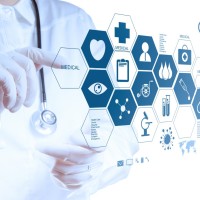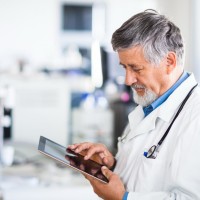Gone are the days when jobs ran from 9-5 and people never worked on weekends. Today’s careers demand that we stay on top of information whether at home or in the office, as well as spending time with our families and our pets. Don’t forget to hit the gym and pick up the groceries too.
Don’t forget to hit the gym and pick up the groceries too.
In such a busy world, it seems like our to-do lists can become endless, so it’s important to find ways to create a healthy work-life balance. Here are five great tech ideas to free up some time.
Create a schedule
Even people with the best of memories are bound to forget things. Apps can help fix that. For simple schedules, try Google Calendar or an MS Office to-do list. For those who need to incorporate client meetings, soccer games, and doctor appointments try a mobile scheduling app that can draw information from multiple sources. This creates a single point of contact for the busy worker on the go.
Also, companies as Agendize.com can make it easier for you because they provide an integrated suite of apps that help businesses generate higher quality leads,improve business efficiency, maximize customer engagement and increase revenues.
Remove distractions
Some of the most productive people around are also the most focused. Eliminating distractions can help you get your work done faster so that you have more time to focus on the fun stuff.
Noisli makes a customizable digital white noise machine and app that can help you tune out distracting sounds. Try the Pomodoro method to balance bursts of productivity with periods of rest.
Get moving, stay active
A spin class can provide heart-healthy cardio and weights can provide strong muscles that burn extra calories. But that’s not all. Exercise is also good for your brain. Exercise has been shown to improve cognition, enhance creativity, and promote faster learning.
Motivate yourself with apps like Map My Fitness or earn incentives for achieving fitness goals with Pact.
Eat well
When it gets busy, many of us default to grabbing food to go, or even skipping meals. If you are already tired and stressed, this can actually make your problems worse.
When it gets busy, many of us default to grabbing food to go, or even skipping meals. If you are already tired and stressed, this can actually make your problems worse. Eating well will not only keep you physically healthy, it will help you mentally and emotionally too. Eating highly processed foods has been linked to anxiety and depression, as well as lethargy..
Take the time to prepare a home-cooked meal together, or dine out at a full-service restaurant. Skip the fast and processed foods, and instead opt for nutritionally sound choices to enjoy your meals and boost your brain too.
Join app communities like Spark People or Fitbit, to stay accountable and on-target.
Schedule some fun
Not all entertainment is going to happen spontaneously, especially for those with a busy schedule. If you think you’ll be running short on free time, take a block from your week and schedule some fun.
Spend an hour at the wading pool while the kid is on summer break, or plan a date night movie. Set a reminder if needed.
Stop feeling guilty if you need to play CandyCrush on a break. Even better, schedule some time to do nothing — or everything. Free play is important to your mental health, creating a healthier, happier, and more productive you.
Life’s demands won’t get any easier, and most of us will continue to struggle to balance work, home, and happiness daily. Remember these app ideas to maximize your work time and enjoy the rest.






![Technology is Leading a Healthcare Revolution [Infographic]](https://technicallyeasy.net/wp-content/uploads/2014/11/infographic-technology-healthcare-200x200.png)
